One of the most common things that hold people back from living a life that they really want to live is not knowing what to do.
They don’t know what idea to go after they don’t know what business to start, they don’t even know what side hustle to start. So I’m going to address this in this video.
If you prefer to read instead, here’s the full transcript:
I successfully figured out the answer to this question and quit my nine to five in 2017 and have travelled to over 35 countries and I now travel full time while working remotely.
So here’s the process that I followed, and this has never been released anywhere on the internet before, and I really, really hope that it helps any of you out there.
The first thing is there are three phases to this plan.
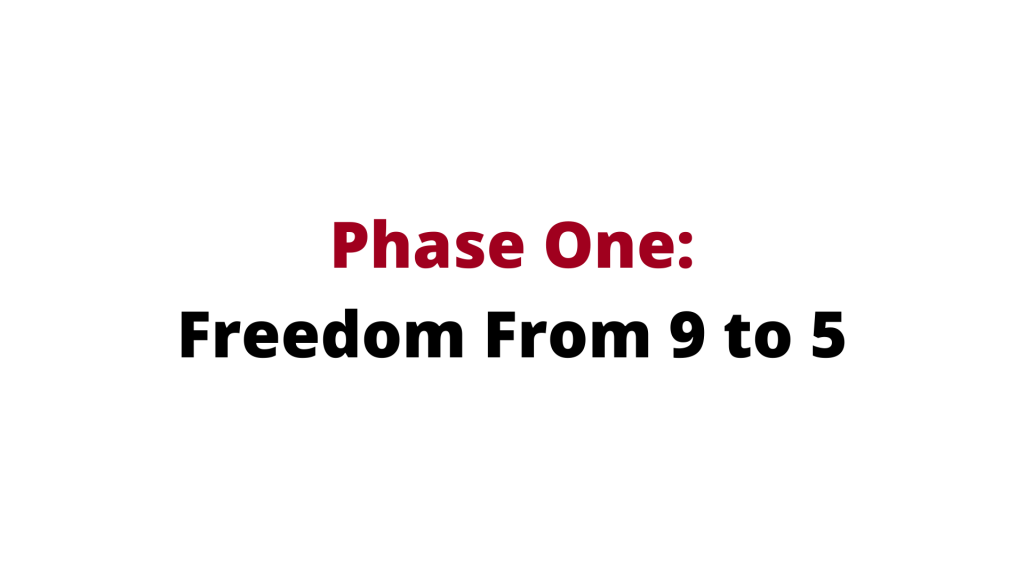
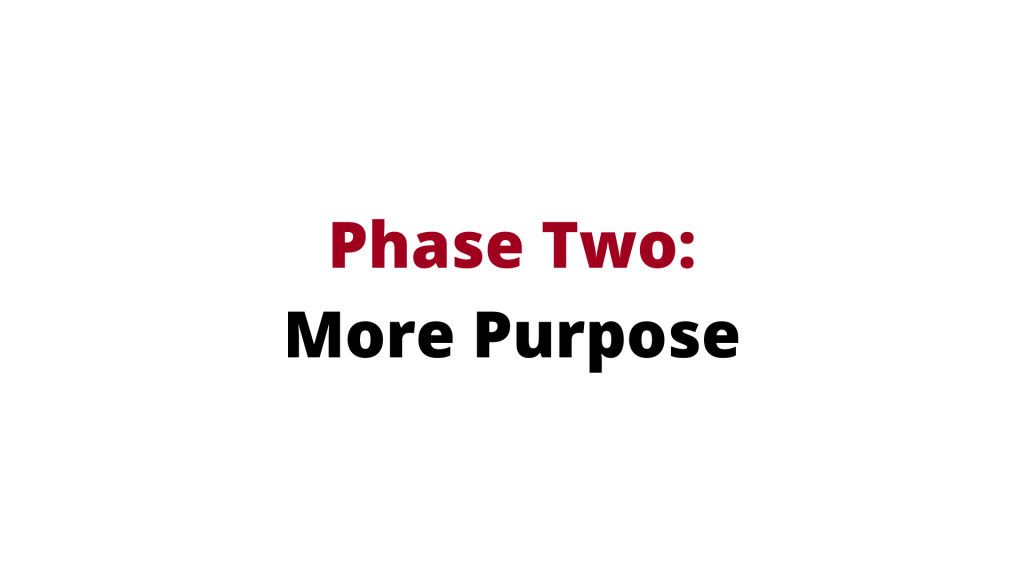
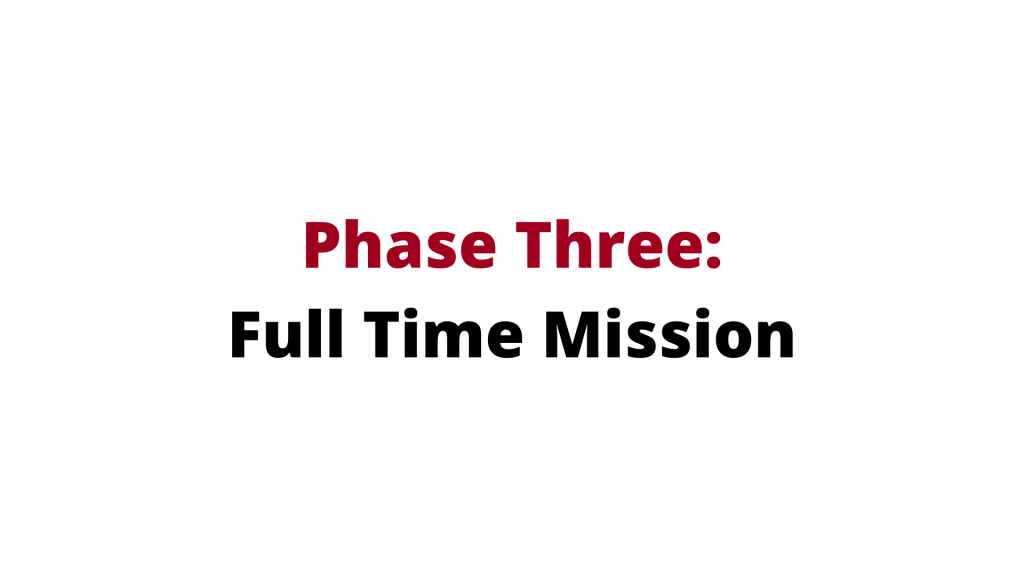
Everybody wants to just start that business that’s going to give them financial freedom right out the gate and honestly for 99% of us It doesn’t work like that. So the three phases are designed to strategically get you closer to that place. So phase one is about getting you out of your nine to five.
Phase Two is about getting you working with more purpose. So you’re not just working for money, but you’re working with passion. And phase three is to be able to focus on your mission or your purpose full time.
So if you’re just getting started Phase One is to fire your boss. Now the path to getting you out of your nine to five is to replace your day job income. So this model is called The Sweet Spot by Jim Collins, and it’s from the book called Good to Great.

And on here, I want you to focus on the area that says what you’re good at, and what pays well. Now you’re going to see that when you do that, you’re going to be rich, but bored. It’s not ideal, but it’s a start, you’re going to get out of your nine to five.
So for most of us, we don’t mind doing something else. Like I didn’t mind doing freelancing in the beginning. I knew it would make me money, but I knew it wouldn’t fulfill me, but it got me out of that cubicle. It got me out of that office every day. So for step one, it was a good start.
So ask yourself, What am I good at? And what pays well, and whether those two things mean what can you offer that other people see you’re good at and see if you’re talented. And you know that other people will pay you for that.
Yesterday I was talking to a friend and he’s 20 years old and he’s into film and he’s really great story and I told him “Hey, you know, business owners would get on the phone with you and just talk you through their business and their mission and their values. And you can help them create the storyline for their business for their social media for all of their you know, website and everything like that and they would pay you for that. “
So look, we don’t always need to shoot for the stars right out the gate. We don’t need to go from nine to five to live in that fabulous Instagram private jet lifestyle. Sometimes we have to take the stairs, slow and steady wins the race. The turtle is underrated.
The next section here is what you love and what pays well, but you can see that in this segment, it doesn’t cover what you’re good at. So it’s just a dream. This is like the guy that wants to be a Hollywood actor, but he’s just useless acting he might love it. And it might pay well to be an A list Hollywood actor, but if you don’t have the talent for it, it’s just not going to happen. Right? Then we’ve got what you’re”
Good, and what you love, you’re going to be happy but poor. So this is what I call the broke artists paradox. We all see those artists, they’re so happy, they get to paint all day, and they love what they do, but they never make any money. So they’re happy but broke. And that’s because it doesn’t pay well. And yes, art might pay well at some point, but a lot of the time, it’s after the person’s already dead. So that’s no use to us right now.
So I’m not saying don’t pursue those dreams. I’m not saying don’t paint if you paint or don’t blog, if you want to write, what I’m saying is don’t make that the thing that you do immediately. We have to work to that. And you’re going to see that in phases two, and three.
So when I look at my life, and I apply it to the sweet spot, I see a few interesting things. So in the early days, I was really into learning and teaching about how to get your freedom, the same thing I do now, but I wasn’t really doing it on a big scale. So I was happy but poor.
What I had to do was really look at the other two parts of the segment. What was I good at? I was good at marketing, and then what would the world pay me for and where those two met was marketing strategy consulting, I would talk to a business owner and just help them make more money and advise them on how to grow their business. So that got me out of the nine to five, that was my side hustle.
I started working with businesses and helping them until it got to the point where I realized it was making enough money for me to quit my nine to five. But at some point, that starts to get boring, you just get tired of doing work that doesn’t do anything for you. It doesn’t light you up in here.
So you then move into phase two, which is about finding more purpose and moving into working on your mission part time. So for this, we use a Japanese model called Ikigai and Ikigai is the thing that makes you jump out of bed in the morning.
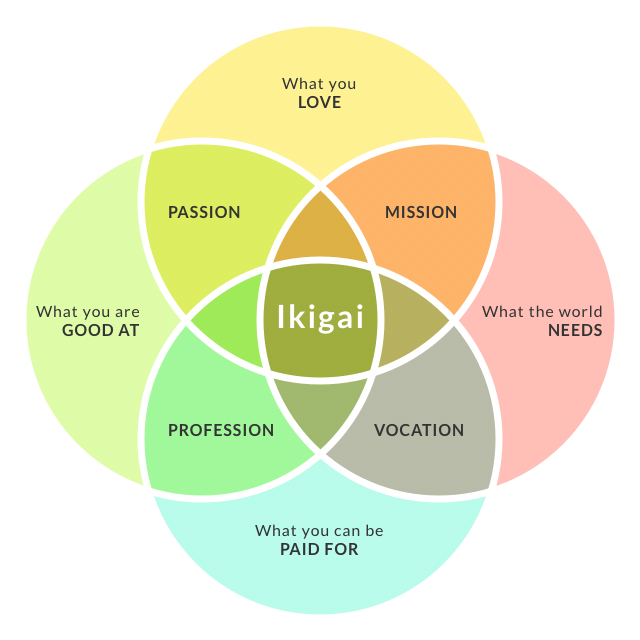
I really liked this model, because I think it helps you learn more about yourself than the sweetspot model. And the most important part that it adds is what does the world need, which is critical.
Because you can have something you love, you can have something you’re good at, and you can have something that pays well, but if the world doesn’t need it, you’re not going to get very far at all. So what the world needs becomes your mission. And you know, you need to make sure it’s something that is going to be monetizable. In the future.
I remember being in Houston on New Year’s Day 2018. And I asked my mentor, Dr. demartini, about my plan for a charity, educational institute teaching the same stuff I teach now. And he said to me, Look, it’s a great plan, if you don’t want to make any money, the world needed it, they needed this education. But he could see that it wasn’t going to generate any money for me.
Now, what I did was actually I’ve trusted in myself, and I found a way to adjust that plan in a way that I can monetize it. But with your mission, you’re not always going to be able to generate money immediately. It can be a longer term thing. It could take years to do that, for example, if I’m trying to build an audience here on my platform, so I can monetize that at some point is going to take me years to do that.
So is that the thing that I should do immediately, you know, as I’m quitting my nine to five and I’m on the way, probably not, that’s a legacy project at the end of my life. So the important thing in phase two is your mission can be separate from your vocation.
They can be separate from your job. And that means maybe you’re gonna put 80% of your time into your vocation to your job, and 20% of the time into your mission, just to start getting that going and seeding it.
So you learn to monetize your mission while you’re working on your vocation. Phase Three is the good part. That’s where you get to start working full time on your mission. So all of the other models, we’ve covered a good but they miss one really important part of the process.
They don’t tell you, what do I need to do right now? So no, this is phase three, I recommend you actually look at phase three now, because it tells you what you can do now to get you to phase three faster.
So you don’t have to stay in phase one and phase two for longer than you need to. And it’s important because I had 100 pages of vision, mission and values. I read every book, I went to every mentor and the part that was missing was I didn’t know what could get me closer to that vision that I had on paper. So it was exciting and it was great, but there was a huge gap from where I was to where
I wanted to be. So this model from Bud Cadell is the answer. And it’s one that you just don’t see in the books. I didn’t see this for probably 10 years of reading nearly every personal development book, and it’s so important. So in this case, I wanted to do Free The Wage Slave full time, that was going to be my passion and my mission. So what was the step that was gonna get me there?
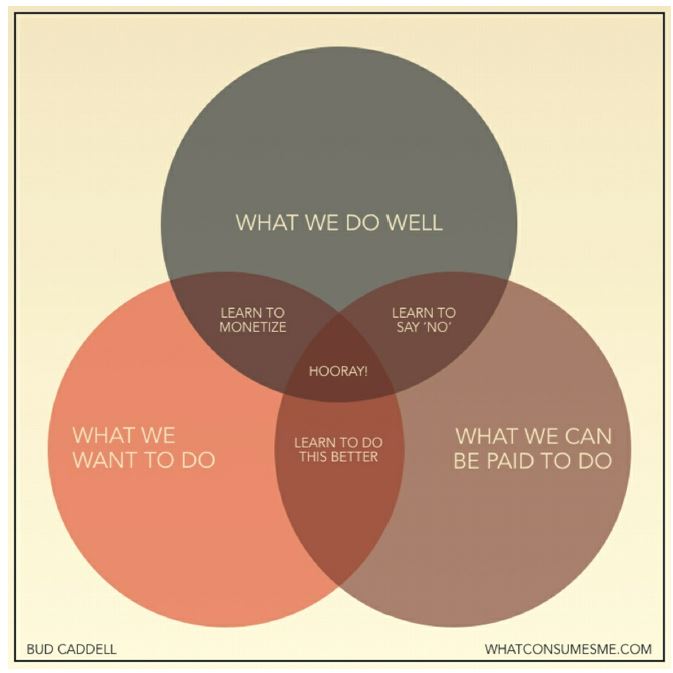
I knew it was what I wanted to do. And I knew I could do it well. So this model told me that I need to learn to monetize it. So my values are about learning and teaching financial freedom. So how do I monetize that? So I monetize that by growing an audience. For example, I’ll talk about a book and I’m going to include a link and it has an affiliate link. So when somebody clicks that and buys it, I get a small commission.
It doesn’t cost that person anything. And the bigger my audience is, the more clicks there are and therefore the more commission they earn. Another example is I can have a sponsor on my podcast, and maybe they give a discount code to my audience. Again, that’s actually helping my audience. It’s not costing them any money, and I’m never going to directly sell anything to my audience. That’s not what
About the next interesting thing is about the thing you need to learn how to do better. So I now learned what I want to do is to create content and do this full time, I learned that for me to monetize that I need to grow an audience because doing that is going to help me monetize more people looking at my stuff means more people clicking the links, and more sponsors are going to be willing to sponsor my podcast and my YouTube channel.
Now in phase three in this mission zone, you’re going to see learn to say no, this is really really important what you say no to dictates your life.
So you become what you say yes to all of these different things that come in. That is what you spend your time and your energy on. That’s the direction your life is going to go in. So at some point, I had to learn to say no.
And I realized that when people would come to me with something that was their priorities, not mine, so they’re asking for help growing their business, they’re asking for advice, so I can help them but at some point, I had to make that transition and say, well, when am I going to focus on my stuff? And if I didn’t start saying no, there was never enough time to do
That. So the freedom came from me saying no. And I had to cancel 10 or 12 client contracts and say, I’m sorry, I can’t work with you anymore. I had to accept that I was going to make less money in the short term. And I had to turn down contracts that were $3,000 contracts. You know, to me, that’s the universe testing me like, you know, you’re telling me you want this? Do you really want that.
So in summary, in phase three in the mission stage, you need to know:
- What you’re going to say no to
- What you need to learn how to monetize
- What you need to get better at
But once you have that mission clear, and you know what you want to work on full time, at some point, this final model in phase three is the path to doing that learn to monetize.
Now start learning about how to get better at that thing. You can do that when you have a nine to five or when your side hustling. And because it’s your mission, you’re going to be motivated, you’re going to do it.
If you can’t play the game yet. You can at least learn how to play the game, but you don’t need to stand on the sidelines. I really, really hope this was helpful for you guys. Any questions that you have hit me up in the comments.

